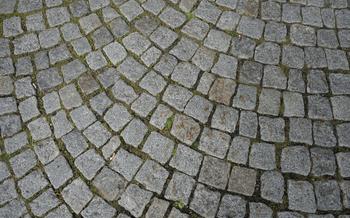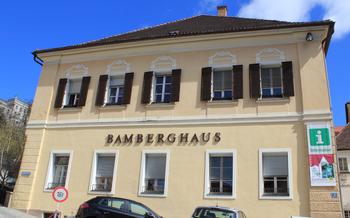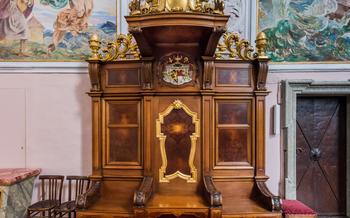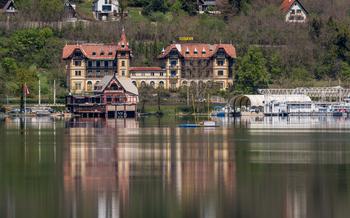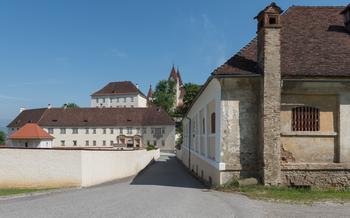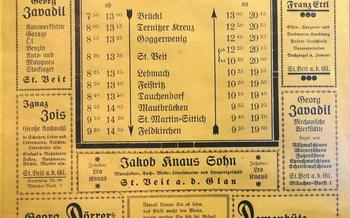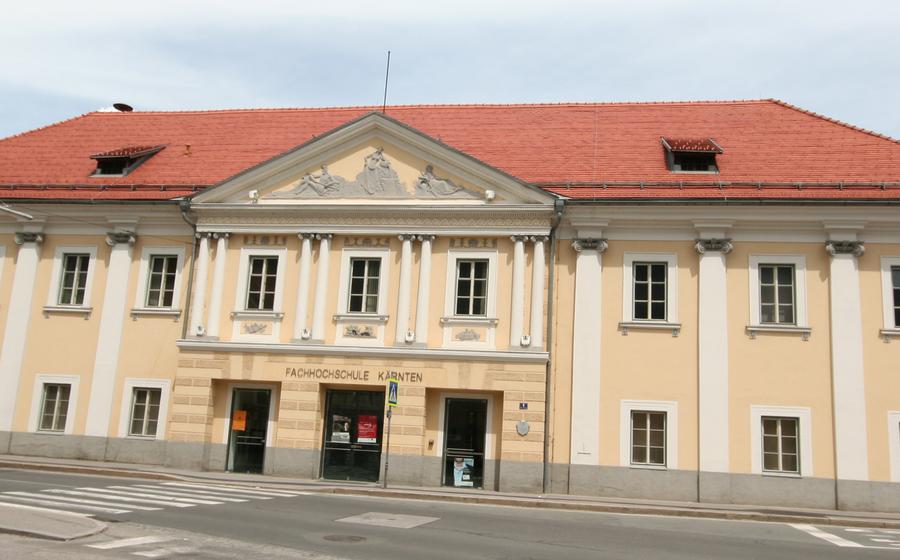
Gurk Cathedral
- History of Gurk Cathedral
- Gurk Cathedral Architecture
- Gurk Cathedral Concerts
- Gurk Cathedral Pilgrimage
- Gurk Cathedral Surroundings
- Best Time to Visit Gurk Cathedral
- Getting to Gurk Cathedral
- Gurk Cathedral Guided Tours
- Gurk Cathedral Accessibility
- Gurk Cathedral Photography
- Gurk Cathedral for Families
- Insider Tip:
History of Gurk Cathedral
Gurk Cathedral, a magnificent architectural masterpiece, stands as a testament to centuries of history and religious devotion in Austria. Its origins can be traced back to the 12th century when Gurk served as the seat of the Carinthian dukes, playing a pivotal role in the region's political and ecclesiastical landscape. The cathedral's construction began in 1140, blending Romanesque and Gothic architectural styles, reflecting the transition from one era to another. Throughout its existence, Gurk Cathedral has undergone several renovations and expansions, shaping its current appearance and preserving its historical significance. Recognized as a national monument, it continues to captivate visitors with its grandeur, symbolizing the rich cultural heritage and deep-rooted faith of the Austrian people.
Gurk Cathedral Architecture
The architectural grandeur of Gurk Cathedral is a testament to the skill and dedication of medieval artisans. Its impressive exterior, characterized by twin towers that soar towards the heavens, is adorned with intricate carvings and sculptures that depict biblical scenes and figures. These carvings, weathered by time, tell stories of faith, devotion, and the rich history of the cathedral.
Stepping inside the cathedral, visitors are greeted by a breathtaking spectacle of vaulted ceilings that seem to reach for the heavens. The walls are adorned with vibrant frescoes and stunning stained glass windows, casting a kaleidoscope of colors onto the marble floors. The windows, with their intricate designs and vibrant hues, depict scenes from the Bible, adding to the sacred ambiance of the cathedral.
The cathedral's interior is a treasure trove of symbolism and iconography. From the intricate carvings on the choir stalls to the delicate tracery of the rose windows, every detail holds a deeper meaning, inviting visitors to contemplate the spiritual significance of the space. The high altar, a masterpiece of Gothic craftsmanship, is a focal point of the cathedral, adorned with sculptures and paintings that narrate the life and sacrifice of Jesus Christ.
Over the centuries, Gurk Cathedral has undergone several restoration efforts to preserve its architectural integrity and maintain its timeless beauty. These efforts have ensured that this magnificent edifice continues to stand as a testament to the enduring power of faith and the artistry of its creators.
Gurk Cathedral Concerts
Gurk Cathedral is renowned for its exceptional acoustics, making it a sought-after venue for high-quality concerts and musical events. The cathedral's soaring vaulted ceilings and spacious interior create a resonant atmosphere that enhances the sound of any musical performance.
Throughout the year, the cathedral hosts a diverse range of concerts and musical genres, from classical and sacred music to contemporary and experimental compositions. Visitors can experience the cathedral's acoustics firsthand by attending one of these events.
One of the highlights of the musical calendar is the annual Gurk Cathedral Music Festival. This prestigious festival attracts musicians and music lovers from around the world, showcasing a variety of musical styles and performances.
Attending a concert at Gurk Cathedral is a truly memorable experience. The combination of stunning architecture, exceptional acoustics, and talented musicians creates a magical atmosphere that transports visitors to another realm.
Gurk Cathedral Pilgrimage
Gurk Cathedral holds a profound significance as a pilgrimage site, attracting devout believers and pilgrims for centuries. The tradition of pilgrimages to Gurk can be traced back to the Middle Ages when the cathedral became a renowned destination for those seeking spiritual enlightenment and divine intervention. Pilgrims from across the region and beyond would undertake arduous journeys to visit the cathedral and pay homage to its sacred relics.
The rituals and traditions associated with Gurk pilgrimages have been passed down through generations, creating a rich tapestry of customs and beliefs. Pilgrims often embarked on their journey with a specific prayer or intention in their hearts, seeking divine guidance or healing. Upon arrival at the cathedral, they would participate in various religious ceremonies, including Mass, processions, and the veneration of relics. The act of pilgrimage was not only a spiritual undertaking but also a symbol of communal unity and faith.
In the spirit of pilgrimage, many visitors still walk long distances to reach Gurk Cathedral, following ancient paths that wind through the picturesque landscapes of Carinthia. The journey itself becomes a form of spiritual preparation, allowing pilgrims to reflect on their intentions and connect with the natural world. The arrival at the cathedral is often marked with a sense of awe and reverence, as pilgrims step into the sacred space filled with centuries of devotion.
Gurk Cathedral pilgrimages continue to play an essential role in Austrian society, preserving the country's rich religious heritage and fostering a sense of community among believers. Whether undertaken for personal spiritual growth or as a communal act of faith, pilgrimages to Gurk Cathedral offer a profound and transformative experience for those seeking a deeper connection with the divine.
Gurk Cathedral Surroundings
The picturesque surroundings of Gurk Cathedral offer a harmonious blend of natural beauty and cultural heritage. Nestled in the heart of the Gurk Valley, the cathedral is embraced by rolling hills, lush meadows, and the majestic Nock Mountains, creating a breathtaking backdrop for this sacred site. Visitors can immerse themselves in the tranquility of nature by embarking on scenic hiking or biking trails that wind through the valley, offering panoramic views of the cathedral and the surrounding landscape.
During the winter months, the snow-capped peaks of the Nock Mountains transform the area into a winter wonderland, inviting visitors to experience the magic of cross-country skiing or snowshoeing amidst the pristine surroundings. The Gurk Valley is also home to several other attractions that complement a visit to the cathedral. The nearby Gurk Abbey, founded in the 11th century, boasts a rich history and is open to visitors for guided tours.
Additionally, Gurk Castle, perched atop a hill overlooking the valley, offers a glimpse into the region's medieval past. Visitors can explore the castle's ruins and learn about its significance as a former stronghold. The Gurk Valley is renowned for its culinary delights, and visitors can savor traditional Austrian dishes at local restaurants and cafes. From hearty Carinthian specialties to freshly caught trout from the Gurk River, the region offers a culinary journey that complements the cultural and historical experience of visiting Gurk Cathedral.
Best Time to Visit Gurk Cathedral
The best time to visit Gurk Cathedral is during the shoulder seasons, either in spring (April-May) or autumn (September-October). During these months, the weather is generally mild and pleasant, with fewer crowds and a more relaxed atmosphere. The natural beauty of the surrounding Gurk Valley is also at its peak during these seasons, offering visitors a chance to combine their visit to the cathedral with outdoor activities such as hiking or biking.
While the cathedral is open year-round, the winter months (December-February) can be challenging due to the cold weather and reduced daylight hours. However, the festive atmosphere during the Christmas season, with special services and concerts, may be a draw for some visitors.
If you are interested in attending specific events or festivals, it is essential to plan your visit accordingly. The annual Gurk Cathedral Music Festival, held in July and August, attracts music lovers from around the world with its diverse program of classical, sacred, and contemporary music concerts. The cathedral also hosts regular exhibitions, lectures, and workshops throughout the year.
To avoid the crowds, consider visiting the cathedral early in the morning or late in the afternoon, when there are fewer tour groups. If you are short on time, a guided tour is a great way to make the most of your visit, as you will learn about the history, architecture, and significance of the cathedral from a knowledgeable guide.
Getting to Gurk Cathedral
Gurk Cathedral is conveniently located and easily accessible by various means of transportation. Whether you prefer the flexibility of driving, the convenience of public transport, or the insights of a guided tour, there are options to suit every traveler.
By Car:
For those traveling by car, Gurk Cathedral is situated just off the main A10 highway, making it easily accessible from major cities in Austria and neighboring countries. Ample parking facilities are available near the cathedral, ensuring a hassle-free visit.
By Public Transportation:
If you prefer to travel by public transport, Gurk Cathedral is well-connected by both train and bus. The nearest train station is Gurk Bahnhof, which is a short walk from the cathedral. Alternatively, several bus lines stop directly in front of the cathedral, providing convenient access from nearby towns and villages.
By Guided Tour:
Joining a guided tour is an excellent option for those who want to learn more about the history, significance, and architecture of Gurk Cathedral. Guided tours are led by knowledgeable guides who can provide insights and anecdotes that bring the cathedral's story to life. Tours typically depart from major cities in Austria, such as Vienna and Klagenfurt, and include transportation to and from the cathedral.
Gurk Cathedral Guided Tours
Gurk Cathedral offers guided tours led by knowledgeable guides who bring the history, architecture, and artwork of the cathedral to life. These tours are available in various languages and cater to different interests and levels of knowledge. Visitors can choose from general tours that provide an overview of the cathedral's highlights to thematic tours that focus on specific aspects such as its medieval art or its role in Austrian history. Private tours are also available for those seeking a more personalized experience.
Guided tours offer a deeper understanding of the cathedral's significance and symbolism, as well as insights into the stories and legends associated with it. Guides point out hidden details, explain the iconography of the stained glass windows, and share anecdotes about the people who have contributed to the cathedral's rich heritage. By taking a guided tour, visitors gain a deeper appreciation for the cathedral's beauty and significance, making their visit even more meaningful.
Gurk Cathedral Accessibility
Gurk Cathedral is committed to providing an inclusive and accessible environment for all visitors, regardless of their abilities. The cathedral features several accessibility features to ensure that everyone can enjoy and appreciate its historical and cultural significance.
Wheelchair users and visitors with limited mobility will find ramps and elevators strategically placed throughout the cathedral, allowing them to navigate the interior spaces effortlessly. Accessible restrooms are also available for their convenience.
For visitors with hearing impairments, assistive listening devices are provided to enhance their participation in guided tours and religious services. The cathedral staff is trained to assist visitors with disabilities and provide any necessary support during their visit.
Gurk Cathedral's commitment to accessibility extends to its website and promotional materials, which are designed to be user-friendly and accessible to all. Visitors can find detailed information about the cathedral's accessibility features on the official website, ensuring that they can plan their visit accordingly.
By creating an accessible environment, Gurk Cathedral strives to welcome and accommodate visitors from all walks of life, allowing everyone to experience the beauty and spirituality of this historic landmark.
Gurk Cathedral Photography
Gurk Cathedral welcomes photography enthusiasts to capture the beauty and grandeur of its interior and exterior. However, to ensure the sanctity of the space and the privacy of visitors, certain guidelines must be followed.
Photography Policy:
- Respectful Photography: Visitors are encouraged to take photographs for personal use and to share their experiences with others. However, photography should be conducted in a respectful manner, avoiding disruption to religious services or other sacred activities.
- Tripods and Flash: The use of tripods and flash photography is generally not permitted inside the cathedral. These devices can be obtrusive and may interfere with the spiritual atmosphere of the space.
- Designated Areas: Photography is allowed in most areas of the cathedral, but certain areas may be designated as no-photography zones. These areas are typically indicated by signs or by a member of the cathedral staff.
Best Photo Spots:
- Altar and Stained Glass: The high altar, with its intricate carvings and colorful stained glass windows, is a popular spot for photography. The play of light through the windows creates a magical atmosphere, especially during sunrise and sunset.
- Cloisters and Courtyards: The cloisters and courtyards of the cathedral offer unique perspectives for capturing the architectural details and serene atmosphere of the complex.
- Exterior Views: Step outside the cathedral to capture the impressive exterior, with its twin towers and intricate carvings. The Gurk Valley and the surrounding mountains provide a stunning backdrop for panoramic shots.
Tips for Great Photos:
- Composition: Pay attention to the composition of your shots, ensuring that the main subject is clear and prominent. Avoid cluttering the frame with unnecessary elements.
- Natural Light: Make the most of the natural light filtering through the stained glass windows. Soft, diffused light can create beautiful effects and enhance the colors of the interior.
- Details: Don't forget to capture the intricate details of the cathedral's architecture, sculptures, and artwork. Close-up shots can reveal hidden treasures and add depth to your photographs.
By following these guidelines and tips, visitors can capture the essence of Gurk Cathedral while respecting its sacred nature and preserving its beauty for generations to come.
Gurk Cathedral for Families
Gurk Cathedral welcomes families with open arms, offering a range of activities and resources to make their visit both educational and enjoyable. Guided tours speziell designed for families are available, with engaging storytelling and interactive elements that capture the attention of young minds. These tours bring the cathedral's history and legends to life, allowing children to connect with the past in a meaningful way.
The cathedral also provides a range of activities and materials to keep children entertained and engaged throughout their visit. Activity sheets, scavenger hunts, and coloring books are available to help children explore the cathedral's treasures and learn about its significance in a fun and interactive manner.
Families can also take advantage of the cathedral's peaceful surroundings to have a picnic or simply relax and enjoy the tranquility of the Gurk Valley. The nearby Gurk Abbey offers a playground and a small petting zoo, providing additional entertainment for children.
By visiting Gurk Cathedral, families can create lasting memories and foster a love of history, art, and culture in their children. The cathedral's unique atmosphere and engaging activities make it an ideal destination for families seeking a meaningful and enriching experience.
Insider Tip:
For an unforgettable experience, plan your visit to Gurk Cathedral during the annual Gurk Cathedral Music Festival, held each summer. This prestigious festival brings together world-renowned musicians and ensembles to perform in the cathedral's acoustically stunning interior. Immerse yourself in the harmonious melodies and sacred sounds as you witness the cathedral transformed into a concert hall like no other. Check the festival's website for the performance schedule and ticket information.
